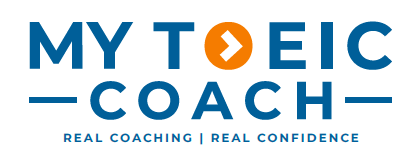🎯 TOEIC Part 4: Talks
Understand real-world English faster. Score higher with strategy.
In TOEIC Listening Part 4, you’ll hear one person speaking — like a tour guide, receptionist, or office worker.
Each talk has three questions.
There are 10 talks total → 30 questions.
This section checks how well you understand real-life spoken English in business and daily situations.
If you’re scoring in the 400–600 range, the right habits can make this one of your fastest gains.
1 – Know the Format and Flow
3 questions per talk — you don’t need every word, just enough for the answers.
Preview questions quickly before the audio starts — it gives you a target.
Expect topics like announcements, meeting updates, travel info, event notices.
The first sentence often reveals the topic — don’t miss it.
Most talks follow a time order — track what happens first, next, last.
2 – Find the Purpose and Main Idea
Identify the speaker’s role — receptionist, driver, sales rep, instructor.
Ask: Why are they speaking? Giving instructions? Announcing a delay? Selling something?
Listen for transition phrases (“Let’s move on…”, “In conclusion…”) — they mark topic changes.
Note the tone — polite, frustrated, excited — it can change the meaning.
3 – Catch Details and Clues
Stay alert for numbers — time, date, price, quantity.
Use any visuals or charts — glance before listening.
Listen for signal words (“First…”, “So the plan is…”) to follow structure.
Watch for future plans — “What will the speaker probably do next?” is common.
Use context clues — the sentence before or after often fills gaps.
4 – Stay Steady Under Pressure
Use elimination — cut answers that don’t make sense.
Never leave blanks — guess if you’re unsure.
Let go of missed questions — refocus instantly.
Practice active listening — think about meaning as you hear it.
Train at real test speed with authentic TOEIC samples.
You don’t need perfect English for Part 4 — you need patterns, focus, and calm.
Train your ear, trust your logic, and listen with purpose.
For more strategies and resources to strengthen your Listening skills, visit the English Library Collection and get ideas you can apply to your Part 4 preparation.

